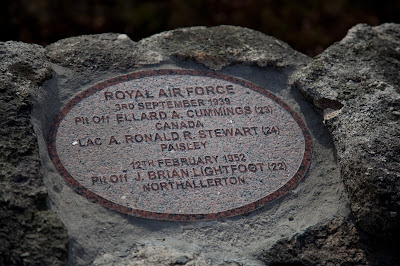Breakfast at Balmoral
Author John
Buchan once described Walter Scott’s 1814 novel Waverley as a "riot of fun
and eccentricity", a view not shared by a great many other commentators.
Some critics have even been known to view Scott’s tales of wild tartan clad Highlanders, romanticised castles and heroic Jacobite insurrection as somewhat dour, inaccurate and humourless.
Some critics have even been known to view Scott’s tales of wild tartan clad Highlanders, romanticised castles and heroic Jacobite insurrection as somewhat dour, inaccurate and humourless.
Notwithstanding this, Sir Walter was charged with organising festivities for
the 1822 visit of King George IV to Scotland in which "the garb of old
Gaul", the kilt and the tartan, featured prominently.
The Royal romance with the Highlands had been kindled and decades later, in 1852, following some three years of careful negotiation, Queen Victoria and the Royal Consort Prince Albert purchased the, by then run down, Balmoral Estate - the previous owner having died after choking on a fishbone.
By 1856 the new Balmoral Castle was complete. The original building was completely demolished and Victoria’s “dear paradise in the Highlands” was good to go.
The 50,000 acres of the new and now ‘Royal’ Balmoral Estate attracted the good and the great to Deeside to hunt, shoot and fish and in consequence Royal Deeside flourished. Alongside the international figures and the parliamentarians of the day, hordes of Victorian tourists flocked to the area by road and rail in the hope of both experiencing Walter Scott’s romanticised Highlands and of fitting in a bit of royal spotting.
Today, the Queen and various members of her family spend much of August at Balmoral and by tradition, many important guests, including the politicians of the day, are invited to wine, dine and hunt at the castle. But, staying at Balmoral could, in the past at least, be something of an ordeal.
The rooms, despite their delightful tartan themed décor, were criticised by some visitors as being tiny, damp and quite cluttered. Lord Clarendon was one such critic. He famously wrote, in 1856, that ‘Thistles are in such abundance that they would rejoice the heart of a donkey.’
Marie Mallet writes in the 1890s, about the “dreadful food and footmen reeking of whisky” while guests often complained that Victoria, a great lover of the outdoors, “had the windows open while we were at dinner’.
Some guests also objected to the “whisky fuelled evenings of merriment and dancing around piles of newly slain stags”, as depicted in Carl Haag’s painting “Evening at Balmoral”. Others, such as Liberal Prime Minister Campbell Bannerman, simply hated the place “It is the funniest life conceivable. Like a convent. We meet at meals, breakfast, lunch, dinner and when we have finished each is off to his cell.”
In the 21st Century Balmoral Estate takes a more sanguine approach to criticisms of Prince Albert’s architectural vision saying only that “Although it remains largely the same as it was in Queen Victoria's reign, successive Royal owners have followed the initiative of Prince Albert in making improvements to the estate.”
There are more such tales in The A-Z of Curious Aberdeenshire by Duncan Harley
ISBN-13: 978-0750983792 published by The History Press 2017
The Royal romance with the Highlands had been kindled and decades later, in 1852, following some three years of careful negotiation, Queen Victoria and the Royal Consort Prince Albert purchased the, by then run down, Balmoral Estate - the previous owner having died after choking on a fishbone.
By 1856 the new Balmoral Castle was complete. The original building was completely demolished and Victoria’s “dear paradise in the Highlands” was good to go.
The 50,000 acres of the new and now ‘Royal’ Balmoral Estate attracted the good and the great to Deeside to hunt, shoot and fish and in consequence Royal Deeside flourished. Alongside the international figures and the parliamentarians of the day, hordes of Victorian tourists flocked to the area by road and rail in the hope of both experiencing Walter Scott’s romanticised Highlands and of fitting in a bit of royal spotting.
Today, the Queen and various members of her family spend much of August at Balmoral and by tradition, many important guests, including the politicians of the day, are invited to wine, dine and hunt at the castle. But, staying at Balmoral could, in the past at least, be something of an ordeal.
The rooms, despite their delightful tartan themed décor, were criticised by some visitors as being tiny, damp and quite cluttered. Lord Clarendon was one such critic. He famously wrote, in 1856, that ‘Thistles are in such abundance that they would rejoice the heart of a donkey.’
Marie Mallet writes in the 1890s, about the “dreadful food and footmen reeking of whisky” while guests often complained that Victoria, a great lover of the outdoors, “had the windows open while we were at dinner’.
Some guests also objected to the “whisky fuelled evenings of merriment and dancing around piles of newly slain stags”, as depicted in Carl Haag’s painting “Evening at Balmoral”. Others, such as Liberal Prime Minister Campbell Bannerman, simply hated the place “It is the funniest life conceivable. Like a convent. We meet at meals, breakfast, lunch, dinner and when we have finished each is off to his cell.”
In the 21st Century Balmoral Estate takes a more sanguine approach to criticisms of Prince Albert’s architectural vision saying only that “Although it remains largely the same as it was in Queen Victoria's reign, successive Royal owners have followed the initiative of Prince Albert in making improvements to the estate.”
There are more such tales in The A-Z of Curious Aberdeenshire by Duncan Harley
ISBN-13: 978-0750983792 published by The History Press 2017
Image courtesy of Balmoral Estates











Comments
Post a Comment